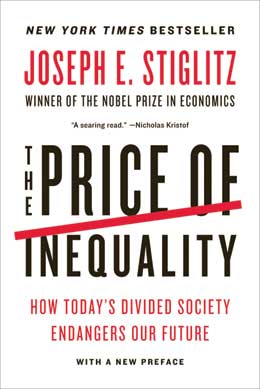
Arun Majumdar, giving a presentation at the TEDx MidAtlantic 2011 conference. was the first director of the Advanced Research Projects Agency – Energy, which makes high-risk public investments in innovative clean energy technology to lead the way for private investment. Photo courtesy of flickr user Theqspeaks, CC BY-NC-SA
Impact investing is frequently presented as a market-based tool that brings the resources of private sector investment to bear on complex social problems. The appeal is both the attraction of substantial new resources (beyond philanthropic and public sector resources) to those problems, and some invocation of the “market” as a valuable way to address how to allocate scarce resources to those problems. This is tied, more and more frequently, to the idea that public sector resources are constrained by the financial crisis and its aftermath; impact investing is presented as a potential alternative as public funds dry up.
The problem with this view is that the idea of impact investing itself depends on the notion that conventional market activity is not likely to target or achieve outsized social returns. It can’t just be the market. It takes some extra effort and resources, or at least innovative practice, to link financial investments to social returns. This extra effort may come from philanthropies, or mission-oriented investors or fund managers, or nonprofits that support investments with community engagement or advocacy—but it has to come from somewhere.
The public sector can be one of those catalysts for impact investment. In fact, the “impact” in impact investment is very often tied to public sector policies that help direct private investments to social purpose. Policies that are meant to increase the social impact of private investment have a developed history in the United States, particularly, but not exclusively, in the field of community development.
The increasing acceptance of impact investing as a term of art has led to a corresponding growth of attention from public officials both in the United States and abroad, who view public sector support for impact investing as an important tool for the delivery of public goods.
Given this attention, and the prominent role that public policies necessarily play in shaping the market for impact investing (and everything else), it is worth reflecting on how government and impact investing interact.
There are many different ways that governments can support private sector impact investing, both directly and indirectly. Here are a set of types of relatively familiar domestic U.S. government activity meant to illustrate the range of policies that fall along the intersection of public policy and impact investment.
Directing Investment to Impact
In some cases, the public sector directly mandates that private investors engage in impact investing, or at least something we might call impact investing. Here, it is the government that sets the standard for measuring impact, with a legislative or regulatory mandate that directs private investments—willing or no—toward a specified social outcome.
A central example in the United States is the Community Reinvestment Act (CRA) of 1977. The CRA was passed to restrict banking discrimination in low- to moderate-income areas. As a piece of impact investing legislation—and as the regulatory apparatus developed over time, especially with revisions in 1995—it had the effect of motivating targeted lending in those communities, and, not incidentally, helped support the development of banking functions that specifically targeted those communities. Indirectly, the CRA supported the development of investment intermediaries whose primary purpose was to invest in disadvantaged communities.
Similarly, green building mandates in large American cities have spurred the development of sustainable property investment strategies, and indirectly supported mission-oriented green developers and investors by increasing the market for their activities.
And of course the public sector can itself be an investor. The Small Business Administration’s Small Business Investment Company Program, for instance, announced its SBIC Impact Investment Initiative in 2011. That initiative provides government investments in private equity funds with at least 50 percent of their investments in low- to moderate-income or economically distressed areas, or in priority sectors including clean energy and education. The initiative is meant to work collaboratively with institutional investors who co-invest in these funds.
These sorts of policies naturally raise important questions around government market practices: Do they restrict economic activity by setting too high a bar for public good provision? Are they well-targeted for maximizing the delivery of public goods, or serving populations in need?
By setting the rules of the game, these policies can have important impacts beyond their specific field, as the definitions or standards they adopt—say, the definition of low- to moderate-income area—may end up being adopted in other public policies or investment practices.
Subsidizing Impact Investments
Many impact investments deliver returns to investors that come from public subsidies tied to the delivery of particular outcomes.
Tax expenditures such as tax credits are a good example—private sector investors are drawn to impact investments through tax credits they can take on their other activities. Again, the U.S. community development sector offers the obvious examples: the Low-Income Housing Tax Credit (LIHTC), instituted in 1986, has helped create an industry of private sector investment in affordable housing by bringing commercial capital into subsidized investments.
The New Markets Tax Credit (NMTC) has similarly promoted, in particular, commercial real estate investment in low- to moderate-income communities. Historic building renovation tax credits serve much the same purpose, though they have a different target for social impact (and can often be combined with other tax credits, including LIHTC and NMTC). Similar tax expenditures are used to promote, for instance, clean energy production.
These tax expenditures are thought to provide substantial leverage for private sector investment in socially beneficial projects—they are a vehicle for “scale” by opening opportunities for larger and more commercially oriented investors, often a core goal for advocates of impact investing.
They also are key to the development of impact investing intermediaries. The tax credits may be more likely to be awarded to organizations dedicated to impact investing, or with a significant impact investing practice. Impact investing professionals become skilled at working through deals potentially complicated by multiple sources of subsidy and funding, and so develop a competitive advantage and, potentially, institutional stability over time.
Tax expenditures raise questions over targeting and effectiveness: To what extent do they support activity that would have taken place anyway? To what extent do they subsidize inefficient delivery of public goods? Would the public sector be better off investing directly? Balancing the incentive for private investors against the delivery of public goods can be difficult, both in the design and management of subsidy programs.
Building Capacity for Impact Investments
The public sector can also support impact investing by building investable opportunities and supporting enterprises that will be the end users of impact investments.
Technical assistance for small businesses and job training programs for particular sectors serve as impact investment policies by directing subsidies to investees rather than investors. Similarly, government programs that bridge the gap between early stage development and venture financing can lead to impact investment. Advanced Research Projects Agency – Energy (ARPA-E), a Department of Energy program created in 2007 and funded in 2009, for example, provides developmental funding for promising technologies with the potential to transform clean energy production. ARPA-E funding is meant to take on high-risk public investments that can lead the way to private investment.
Such capacity building can also be applied to impact investing intermediaries. The CDFI Fund offers grants to community development financial institutions to build their capacity to in turn take on private investments.
Capacity building, as these examples suggest, focuses on the demand for capital rather than the supply. By building more effective demand for investment, capacity building can open the door to a wider range of investors and types of investments.
As with any subsidy program, capacity building efforts must address key questions of efficiency: Are subsidies leveling the playing field for investees, or supporting ineffective public service delivery? Do they create unnecessary transaction costs?
Capacity building can play an important role in setting the terms on which impact investments are measured. Clear definitions for what constitute enterprises that can receive subsidies help shape the marketplace for impact investments, and the development of a community of enterprises that focus on the delivery of public benefits has the potential for longer term benefits if the capacity building helps create durable institutions.
Providing Information and Setting Standards
The public sector does not have to directly mandate or subsidize impact investment in order to support the field. Much recent effort has focused on calling attention to the field, providing information about it, or setting standards for impact investing that are meant to attract motivated investors or create quality assurance for the delivery of public benefits.
The creation of the Obama administration’s Office of Social Innovation and Civic Participation (SICP) in 2009 is one such effort. SICP has organized a series of meetings around impact investing with a range of stakeholders, in an effort to build awareness of impact investing and various key aspects of its implementation, such as impact investing and fiduciary duty, the emerging sector of pay-for-performance investments, or the role that philanthropy plays in supporting the field. Similarly, the State Department called attention to the field through public presentations featuring Secretary Clinton. These sorts of efforts are meant to bring new investors and other stakeholders to the field, and also to signal its legitimacy within the public sector. The Community Affairs divisions of the Federal Reserve Banks of San Francisco and Boston have been very effective advocates for and analysts of innovation in community development finance.
Standard setting is a more active role for governments. As of June 2013, efforts were underway among G8 countries to define what constitutes an impact investment, so that there are shared standards across national governments interested in supporting the field. These efforts build on substantial investment from the philanthropic sector, for instance in the Impact Reporting Investment Standards housed at the Global Impact Investing Network, at providing useful comparable measurement of the social impact of investments.
Clearly, public sector support for, or mandating of, specific forms of measurement can have a profound effect on the impact investing marketplace. Definitions of “low- to moderate-income areas,” or standards for procurement that favor women- and minority-owned businesses, for example, are themselves fundamental to the development of impact investing as a field. Having the designation of CDFI for institutions has clearly had a substantial impact on how community investment intermediaries have developed in the U.S. market.
Information and standard-setting may be presented as relatively low-cost public sector activities, which leave investment itself up to the private sector. They invite questions such as: Does promotion of the field lead to substantial increase in impact investing activity without more direct policies that subsidize or mandate activity? Do standards have teeth, or are they too soft to identify significant public benefit from potential impact investments?
Given the recent attention to impact investing (and the long-standing existence of a community investment field that has not fully been integrated into impact investing in the public imagination), public efforts to identify and set standards for the social impact of community investment may be especially useful. But we must keep in mind that, without public or other forms of subsidies to support investments themselves, information and standards are unlikely to direct substantial amounts of capital toward investments that create social impact beyond conventional market activity.
Two Examples
Many of the examples described above existed well before the term “impact investing” was coined, and were not specifically defined as impact investing initiatives. Has the coining of the term, and its embrace in the public sector, changed how the public sector approaches its role in motivating private capital to public purpose? Two policies associated more directly with the term impact investing suggest some new directions of emphasis.
Recent state legislative activity around Benefit Corporations, or B Corps, exemplifies the potential role of the public sector in information provision and standard setting for impact investing. B Corps is a label for companies that meet specified social and/or environmental performance criteria, and that embed stakeholder (rather than just shareholder) interests into their corporate charter. This label, developed through the advocacy group B Lab, has paved the way for dozens of states to adopt Benefit Corporation legislation, in theory creating a new class of investable entity that embeds social mission into corporate purpose. This emphasis on for-profit corporations suggests a new focus expanding on traditional community investment activity. It remains to be seen whether Benefit Corporation designation attracts substantial new capital to these entities.
Pay-for-success financing, the U.S. label for social impact bonds, has also received substantial interest in recent years as explicit impact investing policy — there are active pay-for-success programs in many states, and the Obama administration has authorized federal support in multiple departments for pay-for-success projects. The idea behind them is to motivate risk-bearing private capital to expand nonprofit or private sector delivery of public services. Returns to investors come from savings when savings are achieved in the delivery of public services. The benefits are meant to be expanded investment in innovative programs for service delivery, as well as an increased and durable focus on achieved results rather than programs created.
Pay-for-success finance involves multiple stakeholders, significant transaction costs, and necessarily robust quantifiable measurements of social impacts in order to live up to its promise. As impact investing policy, it has been promoted as a response to shrinking public sector resources and as a data-driven method for achieving results. The explicit development of multi-sector mechanisms (typically public, private, philanthropic, and nonprofit actors are involved) is also a change in emphasis from most community investment policy mechanisms. The pay-for-success model is still under development, and it is unclear whether the transaction costs of these complex instruments and their effectiveness at motivating private investment at a scale large and effective enough will either relieve strain on public finances or deliver superior social outcomes.
What should we make of the role that public policy plays, or could play, in impact investing?
- The role of policy in supporting private investments with public purpose is well-established, and takes many different forms.
- The challenge for successful impact investing policies is to motivate significant investment that has identifiable social benefit, without subsidizing ineffective activity.
- The potential benefits of successful impact investing policies include not just the immediate investment activity they generate, but also the institutional forms and networks they help develop.
- There are a wide range of policies that support impact investment activity, and they likely work best when coordinated, so that policies share social objectives, and information and standards reinforce the goals of subsidies and mandates.
- The excitement around impact investing in policy circles should engage with and build upon existing practice, and does not represent a qualitative change in private investment for social purpose.
- Impact investment policies need firm justification for why private investment is a superior vehicle for creating some social benefit, and for the evaluation of the social return on public investment.
The field of impact investing will develop most effectively with an integrated approach to public policy that acknowledges the fundamental role of the public sector in shaping market outcomes and supporting outcomes that conventional investment activity will otherwise not achieve.






Comments